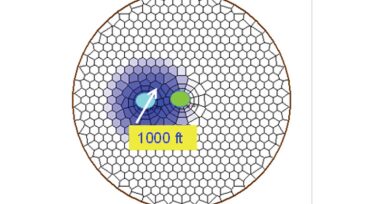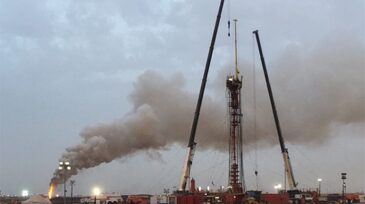Drilling
This paper presents a comprehensive literature review of perforate, wash, and cement techniques that compares new methods with traditional ones and uses field cases and computational fluid dynamics to find the most cost- and time-effective practices without sacrificing safety.
The authors of this paper describe a method of stimulating a multizone hydrocarbon-producing well wherein a tool is deployed downhole by wireline to generate acid vapor at a target depth, allowing each interval to be treated uniquely.
The company’s new Retina imaging system creates high-resolution borehole images at the drill bit.
-
In the current work, a rig advisory system is developed to continually improve rate of penetration (ROP) and drilling performance. An intelligent drilling advisory system (IDAS), based on a soft closed-loop solution with multiple regression analysis has been established.
-
For the development of the Dvalin high-pressure/high-temperature (HP/HT) gas field in the Norwegian Sea, a completion scheme using standalone screens is planned.
-
Wells in deepwater reservoirs show significant rate decline with time as the result of various causes. A diagnostic tool for quantification of factors influencing well-productivity decline is presented in this paper.
-
The success of water-conformance operations often depends on clear identification of the water-production mechanism. Such assessment can be complicated significantly when formation damage is also occurring.
-
This case study discusses the methodology that underlies the successful determination of the depths and the radial locations in the outer casing strings of multiple leaks in an offshore well.
-
This paper focuses on the preparation for, and implementation of, well-control training, while highlighting the integration of people skills into curricula and what advantages operators and drilling contractors have obtained.
-
This paper describes the mobilization of a snubbing unit and blowout preventer (BOP) stack in the Middle East that enabled a well with an underground blowout and surface broaching to be brought under control within a short time.
-
SponsoredRunning casing to depth in long lateral sections is challenging, often costing operators a significant portion of pay zone at the toe of the well. This article highlights a technology that helped one operator add $120,000 to its incremental gas recovery.
-
Directional drilling and measurement-while-drilling technology has become so democratized in the Texas shale sector that no provider holds more than 8% of the market share.
-
Three appraisal wells drilled this year—GTA-1, Yakaar-2, and Orca-1—targeted nine hydrocarbon-bearing zones, encountering gas in high-quality reservoirs in all zones and yielding a combined 160 m of net pay.













